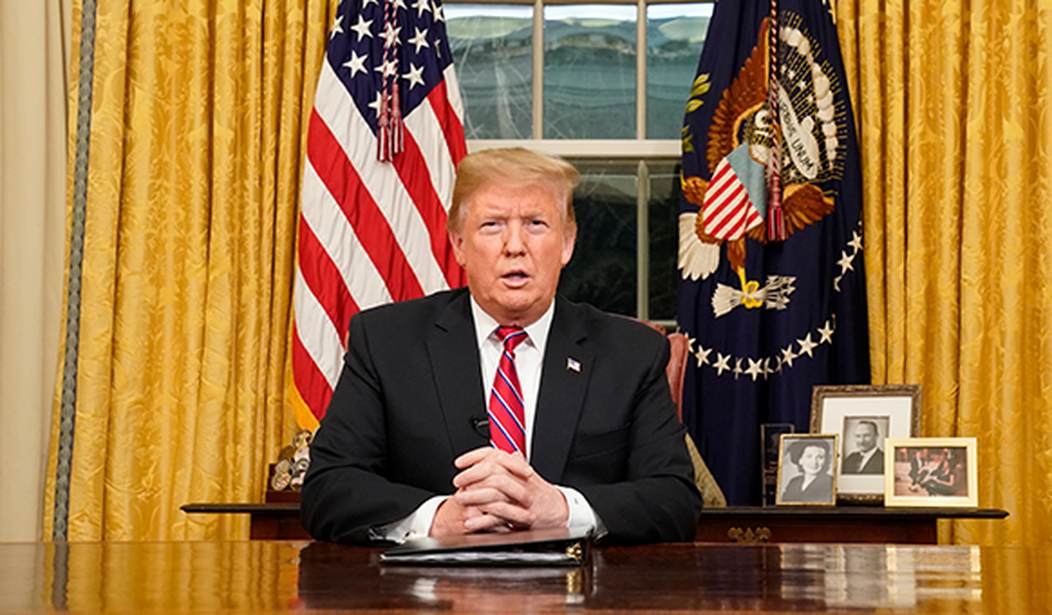There's been a curious trend that's been emerging in the political and media landscape lately.
As sure as the sky is blue, voices in dinosaur media sound warnings about our "dictator-in-chief," President Donald Trump. What's been on a steady rise, however, is the number of center-right voices, with people appearing more willing to share concerns or frustrations.
A natural question follows from noticing this pattern: Motives matter as much as timing. Are more people on the right suddenly frustrated with Trump, or are legacy media outlets boosting every single critique because that narrative serves their interests?
That brings me to another question: Are we witnessing a true shift inside the right, or are we being shown a carefully curated highlight reel that a press corps that never forgave Trump for beating the Hildebeast in 2016 has shaped?
A Chorus or an Echo
Center-right figures always held a wide range of views on Trump, and every moment contains a spectrum of temperaments. Not every conservative favors the same tone, instincts, or governing style.
Trump never claimed to offer a gentrified, country-club conservatism, and he also never pretended to court people who feared sharp elbows in politics. He entered public life as a disruptor who thrives on friction; while many appreciated that quality, others don't.
There's been a recent uptick in criticisms from a handful of business-oriented conservatives, policy wonks, and traditionalist figures, who surface to take a breath and grumble about tariffs, rhetoric, or institutional pressure.
Regardless of where you land, it's admittedly fair ground for policy arguments, because movements thrive when ideas honestly compete.
But something else feels off: Major networks and prominent newspapers suddenly run those critiques, as if the entire right now shares identical frustrations. This magnification gives the impression of a mass revolt, whereas reality is far more modest.
Genuine Disagreement Meets Hungry Cameras
There have been a couple of fresh examples that capture this dynamic well, and both emerged recently. There are a myriad of examples out there, many from the usual suspects, and I didn't want their TDS to taint anything more than what it already has.
Kenneth Griffin, a prominent financial figure, raised concerns about tariffs and trade favoritisms.
Ken Griffin, the billionaire CEO and founder of the hedge fund, criticized Trump during a Thursday interview on CNBC.
"Is that our country, that we're going to favor the big and the connected? That's not the American story," Griffin said to CNBC.
"When the state becomes involved in picking winners and losers, there's only one way this game ends: All of us lose," he said.
His comments come after Trump said in August that he would impose a 100% tariff on semiconductor imports, but companies that promised to invest in the US would be exempt.
In the same month, Apple announced that it would invest $100 billion in its US facilities, in addition to the $500 billion it pledged in February. Trump also allowed American chip giants like Nvidia and AMD to sell some chips to China if they agreed to grant the US government a 15% cut of their China revenue.
"The line outside the White House of every business arguing why they should be exempt from paying tariffs on what they import into their products is nauseating," Griffin said to CNBC.
Griffin broke no new ground by defending competition over government influence.
Like a lion jumping on a lamb chop in the Serengeti, the media jumped on his comments anyway, framing them as signs of a larger unraveling.
Even if his conclusions differ from those who prefer Trump's strategic tariff pressure, his criticism stems from a specific worldview rooted in finance and growth, making it a legitimate observation.
This example reveals a truth that matters: Legitimate debate emerges naturally within a healthy movement, yet that normal process becomes distorted when the cameras seek out specific storylines.
When a modest policy critique transforms into a five-alarm headline because producers decided to chase conflict and page views, not nuance.
There's a wide enough intellectual range to support internal disagreements without unraveling, but everything is blown out of the water when legacy media narratives portray routine friction as an ideological exodus.
A Media Environment Built for Selective Magnification
Beneath the surface sits an uncomfortable reality: The legacy media built a cottage industry around amplifying every right-leaning voice that criticized Trump.
Whenever anybody living on the center-right: scholar, donor, pundit, or strategist, utters the slightest distance, he or she receives top-shelf coverage, including chyrons screaming about the right's break-up.
It's these images the networks want, newspapers wish to quote, and digital outlets can use for headlines. Their incentives perfectly align with any sound that hints at division inside the conservative coalition.
Following this charade parade, we see patterns of omission: support for Trump from working families, rural families, voters, independent-minded moderates, small-business owners, and law enforcement officials rarely receives equal treatment, because those stories lack the correct storyline.
Outlets ignore unity and spotlight conflict, because unity embarrasses them after spending years shaping Trump as a dead-kitten-eating, puppy-killing monster, without allies or accomplishments.
Nowadays, selective magnification defines their coverage.
A Center-Right With Plenty of Opinions
Something else deserving recognition are center-right frustrations that originate from sincere places, and motives always deserve fair scrutiny; specific policy differences come from long-standing philosophical disagreements.
Some people believe Trump's trade approach causes too much disruption. In contrast, others prefer quieter rhetoric from a conservative leader, and even a few wish the movement would mirror the tidy political style of the 1990s, although the country has changed dramatically.
Those concerns exist and are valid: I treat those arguments with honesty, because real conservatism values truth far more than tribal instinct. The key insight rises from context: A handful of voices expressing disagreement doesn't equal a coalition in revolt. The base remains strong, and working Americans still believe Trump fights for their interests with more resolve than any Republican in decades. Vets remember his visits to Walter Reed; police remember his support during the years when the media started calling them villains; and families remember the pre-inflation economy that allowed hope to grow again.
Final Thoughts
Back before any thoughts of a digital era dominating media, I worked as a general assignment reporter for a radio station in Eau Claire, Wisconsin, covering the exciting city meetings. After one riveting meeting, I had a chance to speak with City Manager Eric Andersen, a stand-up guy. He told me something that I've held since:
"Democracy thrives on conflict."
He referred to conflict in the way family members argue around a dinner table, where nobody flips tables or storms out of the house (another reason is that we never wanted to make my mother angry). Family members would simply talk louder, push harder, and make their point with a little edge, a disagreement living in tone and attitude, not anything physical — the kind of tension that shows up when two people want the same outcome, but argue about how to get there.
From my view, there's no evidence of a broad center-right realignment against Donald Trump, just a normal level of internal disagreement typical of any political movement. Additionally, there's also a media environment that's eager to amplify every critical voice until the noise resembles a chorus.
Always existing around the edges of Trump's coalition, critics find their voices rise or fall depending on who controls the spotlight. Legacy outlets now target those smaller voices with relentless energy because they want, no, they NEED the appearance of collapse far more than the truth about stability.
When they welcome honest debate, movements grow, and that's a dynamic that Trump supporters have never feared. What they do fear is a press that twists routine disagreements into a narrative built for political gain, which carries weight because the evidence sits everywhere.
I trust my eyes more than any edited montage, and I trust the instincts of working Americans who lived through two contrasting presidencies.
They know what leadership feels like and what media manipulation sounds like.
A Deeper Look Awaits
Join PJ Media VIP for complete access to in-depth analysis, behind-the-scenes reporting, and columns written with honesty, clarity, and a refusal to bow to narrative pressure.










Join the conversation as a VIP Member